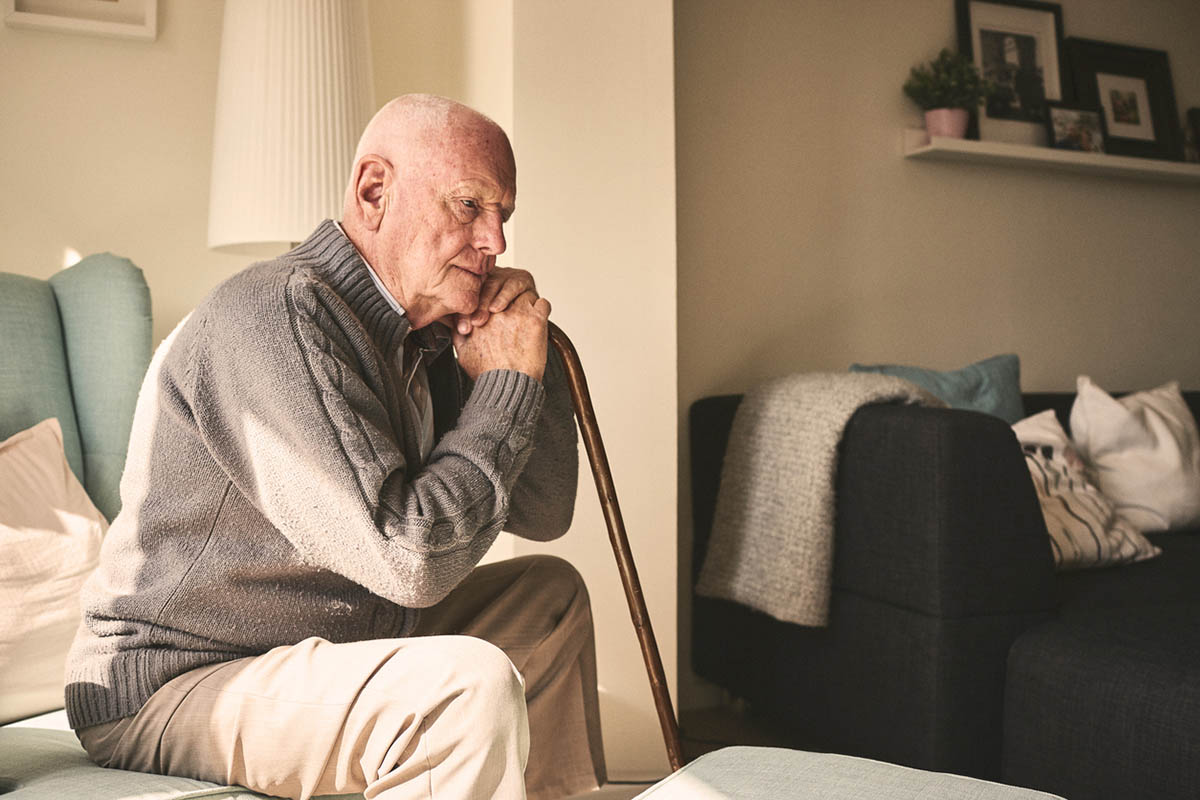Because this piece does not have an abstract, we have provided for your benefit the first 3 sentences of the full text.
To the Editor: In an important recent article, Fontenelle et al reviewed published reports of electroconvulsive therapy (ECT) in patients with obsessive-compulsive disorder (OCD), finding inconclusive evidence for efficacy of ECT in OCD despite clinical improvement in about 60% of published cases. ECT remains the most effective treatment for severe depression and can be lifesaving. Because OCD is often comorbid with severe depression, ECT remains an important treatment consideration in this patient population.
This work may not be copied, distributed, displayed, published, reproduced, transmitted, modified, posted, sold, licensed, or used for commercial purposes. By downloading this file, you are agreeing to the publisher’s Terms & Conditions.
See article by Fontenelle et al
Safety and Efficacy of Electroconvulsive Therapy for Depression in the Presence of Deep Brain Stimulation in Obsessive-Compulsive Disorder
To the Editor: In an important recent article, Fontenelle et al1 reviewed published reports of electroconvulsive therapy (ECT) in patients with obsessive-compulsive disorder (OCD), finding inconclusive evidence for efficacy of ECT in OCD despite clinical improvement in about 60% of published cases. ECT remains the most effective treatment for severe depression and can be lifesaving.2 Because OCD is often comorbid with severe depression, ECT remains an important treatment consideration in this patient population. Here we report the case of a patient with treatment-resistant OCD and depression, both of which improved with ECT in the presence of bilateral deep brain stimulation (DBS).
Case report. Mr A, a 47-year-old single man, had been diagnosed at intake with OCD (according to DSM-IV criteria) with onset in his teenage years. His illness was severe and disabling and had resulted in multiple hospitalizations, extensive exposure and response prevention therapy, multiple antidepressant and other psychotropic drug trials, and a trial of repetitive transcranial magnetic stimulation. The patient presented to our clinic severely depressed and had a course of ECT with good antidepressant response and some improvement in his OCD. Because his OCD symptoms recurred about 2 years later, DBS was recommended. Mr A underwent ventral capsule/ventral striatum (VC/VS) DBS implantation in May 2013 under the auspices of the Food and Drug Administration’s Human Device Exemption.3
Deep brain stimulation resulted in a reduction in his Yale-Brown Obsessive Compulsive Scale4 (Y-BOCS) score from the extreme to moderate/severe range (Y-BOCS = 33 at baseline, 24 at 6 weeks post activation). His obsessive-compulsive symptoms remained stable over the following 2 years (Y-BOCS = 23 at 22 months); however, 2 years following DBS activation, the patient reported worsening depression (confirmed according to DSM-IV criteria) and suicidal ideation.
After failing to respond to both medication and DBS adjustments, the patient underwent 3 inpatient ECT treatments with bitemporal electrode placement over 1 week. Deep brain stimulation was turned off and, additionally, voltage was set to 0 as a safeguard against inadvertent DBS reactivation.5,6 The treatments were well tolerated. Electroconvulsive therapy reduced depressive symptoms from severe to mild (Hamilton Depression Rating Scale7 [HDRS] = 24 at baseline, 7 at discharge) and reduced OCD symptoms from severe to moderate (Y-BOCS = 26 at baseline, 16 at discharge). Mr A underwent 2 more ambulatory ECT treatments over the following 2 weeks, during which time his obsessive-compulsive and depressive symptoms fluctuated. One week later, DBS was reactivated. Presently, he remains stable (HDRS = 12, Y-BOCS = 24 at 1 month post reactivation).
Despite theoretical risks,8,9 9 cases of ECT in the presence of DBS have been reported without adverse outcomes. DBS was implanted in these cases to treat Parkinson’s disease (subthalamic nucleus5,10-12 and ventral intermediate nucleus13 targets), essential tremor (ventral intermediate nucleus target6,14), depression (subcallosal cingulum target15), and cervical dystonia (globus pallidus target16), respectively. This is the first report of ECT in the presence of DBS for OCD. We report this case both to add to the evidence base for the safety of ECT with implanted DBS and to highlight the importance of ECT as a treatment for severe depression in patients with comorbid OCD.
References
1. Fontenelle LF, Coutinho ES, Lins-Martins NM, et al. Electroconvulsive therapy for obsessive-compulsive disorder: a systematic review. J Clin Psychiatry. 2015;76(7):949-957. PubMed doi:10.4088/JCP.14r09129
2. Kellner CH, Greenberg RM, Murrough JW, et al. ECT in treatment-resistant depression. Am J Psychiatry. 2012;169(12):1238-1244. PubMed doi:10.1176/appi.ajp.2012.12050648
3. Food and Drug Administration. Letter to Patrick L. Johnson, Medtronic Neuromodulation, from Donna-Bea Tillman, director, Office of Device Evaluation, Center for Devices and Radiologic Health. Silver Spring, MD: FDA; 2009 Feb.
4. Goodman WK, Price LH, Rasmussen SA, et al. The Yale-Brown Obsessive Compulsive Scale, I: development, use, and reliability. Arch Gen Psychiatry. 1989;46(11):1006-1011. PubMed doi:10.1001/archpsyc.1989.01810110048007
5. Bailine S, Kremen N, Kohen I, et al. Bitemporal electroconvulsive therapy for depression in a Parkinson disease patient with a deep-brain stimulator. J ECT. 2008;24(2):171-172. PubMed doi:10.1097/YCT.0b013e318154b993
6. Quinn DK, Rees C, Brodsky A, et al. Catatonia after deep brain stimulation successfully treated with lorazepam and right unilateral electroconvulsive therapy: a case report. J ECT. 2014;30(3):e13-e15. PubMed doi:10.1097/YCT.0b013e31829e0afa
7. Hamilton M. A rating scale for depression. J Neurol Neurosurg Psychiatry. 1960;23(1):56-62. PubMed doi:10.1136/jnnp.23.1.56
8. Zhi-De D, Hardesty DE, Lisanby SH, et al. Electroconvulsive therapy in the presence of deep brain stimulation implants: electric field effects. Conference Proceedings of the 32nd Annual International Conference of the IEEE. August 31-September 4, 2010; Buenos Aires, Argentina: 2049-2052.
9. Gahr M, Connemann BJ, Freudenmann RW, et al. Safety of electroconvulsive therapy in the presence of cranial metallic objects. J ECT. 2014;30(1):62-68. PubMed doi:10.1097/YCT.0b013e318295e30f
10. Chou KL, Hurtig HI, Jaggi JL, et al. Electroconvulsive therapy for depression in a Parkinson’s disease patient with bilateral subthalamic nucleus deep brain stimulators. Parkinsonism Relat Disord. 2005;11(6):403-406. PubMed doi:10.1016/j.parkreldis.2005.04.005
11. Nasr S, Murillo A, Katariwala N, et al. Case report of electroconvulsive therapy in a patient with Parkinson disease concomitant with deep brain stimulation. J ECT. 2011;27(1):89-90. PubMed doi:10.1097/YCT.0b013e3181da843c
12. Ducharme S, Flaherty AW, Seiner SJ, et al. Temporary interruption of deep brain stimulation for Parkinson’s disease during outpatient electroconvulsive therapy for major depression: a novel treatment strategy. J Neuropsychiatry Clin Neurosci. 2011;23(2):194-197. PubMed doi:10.1176/jnp.23.2.jnp194
13. Chang VC, Hardestey DE, Ford B, et al. Electroconvulsive therapy for depression in a patient with right sided VIM DBS. Final Program of the 11th International Congress of Parkinson’s Disease and Movement Disorders. June 3-7, 2007; Istanbul, Turkey: Abstract 688.
14. Moscarillo FM, Annunziata CM. ECT in a patient with a deep brain-stimulating electrode in place. J ECT. 2000;16(3):287-290. PubMed doi:10.1097/00124509-200009000-00010
15. Puigdemont D, Portella MJ, Pérez-Egea R, et al. Depressive relapse after initial response to subcallosal cingulate gyrus-deep brain stimulation in a patient with a treatment-resistant depression: electroconvulsive therapy as a feasible strategy. Biol Psychiatry. 2009;66(5):e11-e12. PubMed doi:10.1016/j.biopsych.2009.03.018
16. Vila-Rodriguez F, McGirr A, Tham J, et al. Electroconvulsive therapy in patients with deep brain stimulators. J ECT. 2014;30(3):e16-e18. PubMed doi:10.1097/YCT.0000000000000074
aDepartment of Psychiatry, Icahn School of Medicine at Mount Sinai, New York, New York
bDepartment of Neurology, Icahn School of Medicine at Mount Sinai, New York, New York
cDepartment of Neurosurgery, Icahn School of Medicine at Mount Sinai, New York, New York
dDepartment of Neuroscience, Icahn School of Medicine at Mount Sinai, New York, New York
Potential conflicts of interest: Mr Rosenthal has financial interest in Halo Neuroscience. Drs Goodman and Aloysi and Mr Rosenthal have received research support from Brainsway (for study of Deep TMS in OCD). Dr Goodman has received research support from Medtronic (donated devices). Dr Kopell has served as a consultant for Medtronic SNT, St Jude Neuromodulation, and MRI Interventions. Drs Leibu and Kellner report no potential conflicts of interest.
Funding/support: There was no external source of financial or material support for this work.
J Clin Psychiatry 2016;77(5):689-690
dx.doi.org/10.4088/JCP.15lr10420
© Copyright 2016 Physicians Postgraduate Press, Inc.
This PDF is free for all visitors!




